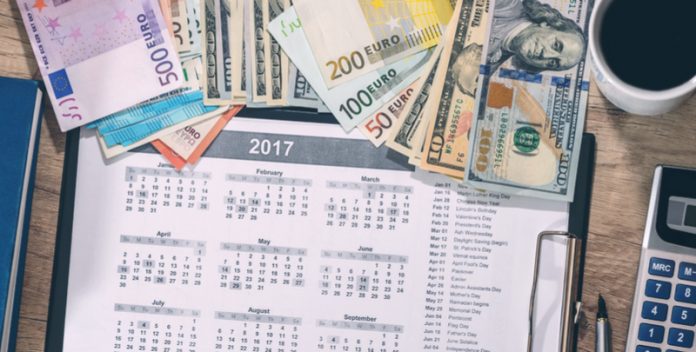With little in the way of supportive data, the euro has struggled to make gains this week. The euro U.S. dollar exchange rate is trading at $1.1120, its lowest level since the end of last month.
| What do these figures mean? |
|---|
|
When measuring the value of a pair of currencies, one set equals 1 unit and the other shows the current equivalent. As the market moves, the amount will vary from minute to minute. For example, it could be written: 1 EUR = 1.12829 USD Here, €1 is equivalent to approximately $1.13. This specifically measures the euro’s worth against the dollar. If the U.S. dollar amount increases in this pairing, it’s positive for the euro. Or, if you were looking at it the other way around: 1 USD = 0.88789 EUR In this example, $1 is equivalent to approximately €0.89. This measures the U.S. dollar’s worth versus the euro. If the euro number gets larger, it’s good news for the dollar. |
Despite Macron’s political party winning a decent majority in the French Parliamentary elections, voter turnout was still extremely low at a mere 42%. With little else to focus on over the start of the week, investors are concerned that Macron may encounter problems with Unions whilst trying to implement his big reforms. Macron’s reforms are pro-business and therefore should, in theory, improve the economic position of France. Problems pushing these reforms through would then limit any upside for the euro.
Whilst it’s been a quiet start to the week for the euro, things are set to pick up as the end of the week approaches. Thursday sees the release of the EU’s consumer confidence data as well as an economic bulletin. Friday sees the release of manufacturing and service sector sentiment indicators for the Eurozone, as well as France’s GDP. Should these data points impress on the upside, the euro could be boosted out of the doldrums.
| Why does strong economic data boost a country’s currency? |
|---|
| Solid economic indicators point to a strong economy. Strong economies have strong currencies because institutions look to invest in countries where growth prospects are high. These institutions require local currency to invest in the country, thus increasing demand and pushing up the money’s worth. So, when a country or region has good economic news, the value of the currency tends to rise. |
There has also been little in the way of U.S. economic releases in recent days. However, the dollar has found support in the form of several comments from Federal Reserve officials. For much of the second quarter of this year, investors had been wary of the dollar. Fears that weak U.S. data would prevent the Federal Reserve from increasing interest rates again this year had weighed on sentiment. Yet, despite the continuation of weak economic data, the Federal Reserve have been sounding upbeat regarding the U.S. economy, which has supported hopes of an interest rate rise and, in turn, supported the buck.
| Why do raised interest rates boost a currency’s value? |
|---|
| Interest rates are key to understanding exchange rate movements. Those who have large sums of money to invest want the highest return on their investments. Higher interest rate environments tend to offer higher yields. So, if the interest rate or at least the interest rate expectation of a country is relatively higher compared to another, then it attracts more foreign capital investment. Large corporations and investors need local currency to invest. More local currency used then boosts the demand of that currency, pushing the value higher. |
Earlier in the week, U.S. Federal Reserve official Bill Dudley was very confident of more rate hikes coming, airing his concerns of rate hikes not keeping up and overshooting inflation. Yesterday, Rosengren warned over low interest rates posing a risk to financial stability, which also gave a boost to the dollar as investor consider more hikes could be on the way. Meanwhile, the outlook for today is relatively quiet with macro data that could be interesting to the currency trading increasing on Thursday and Friday.
|
This article was initially published on TransferWise.com from the same author. The content at Currency Live is the sole opinion of the authors and in no way reflects the views of TransferWise Inc. |





